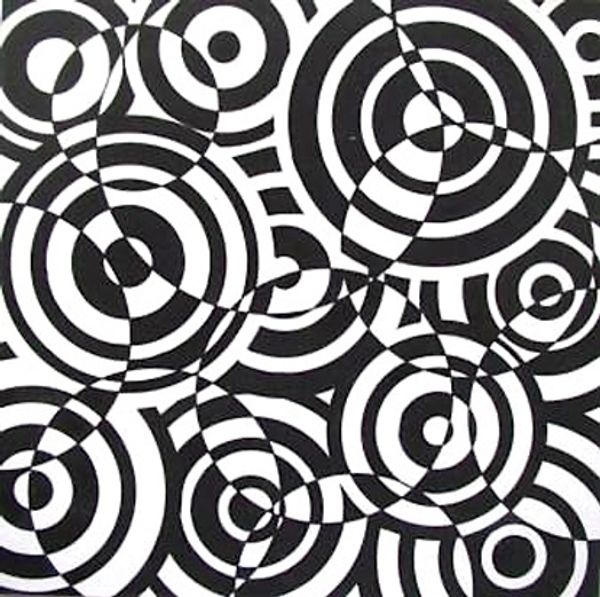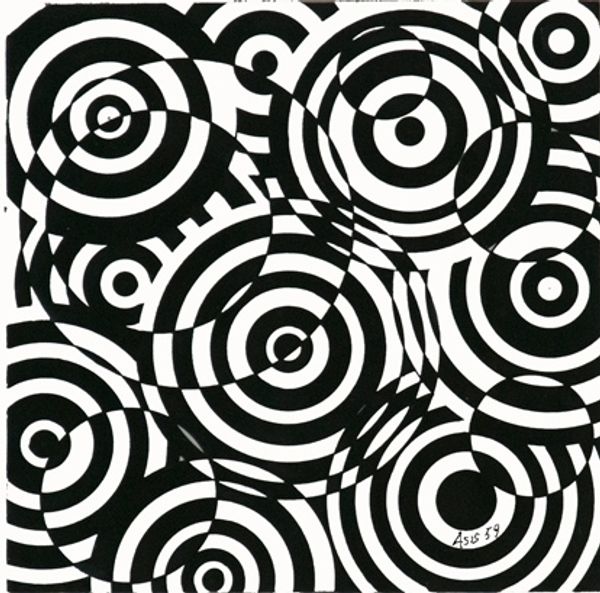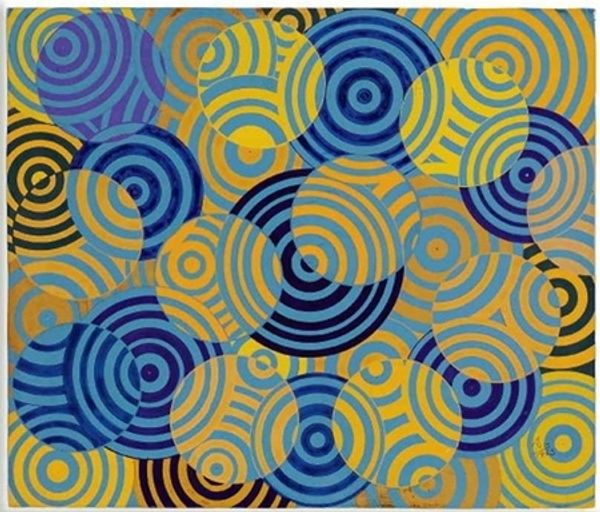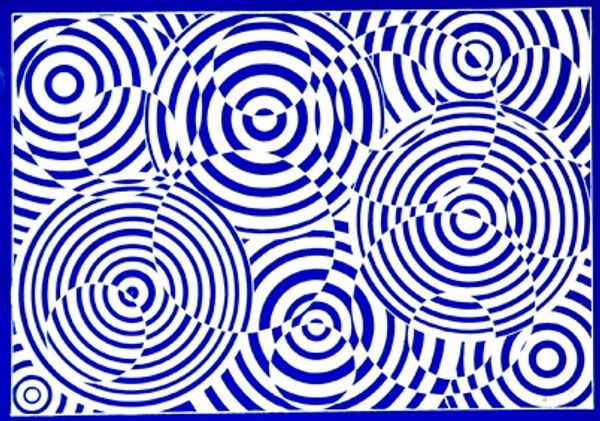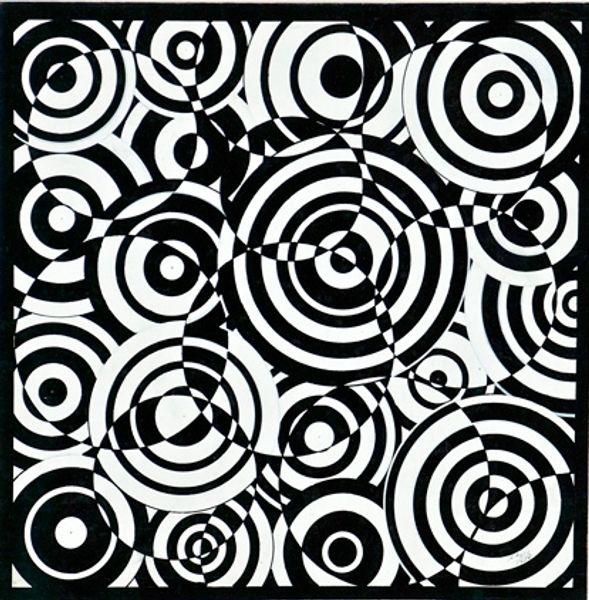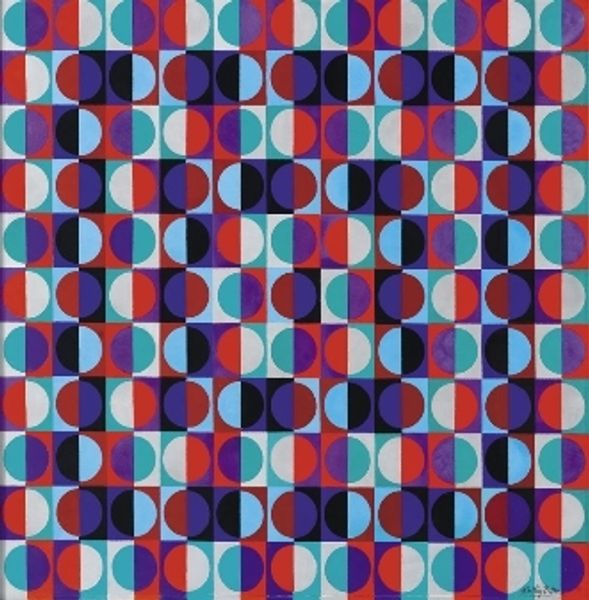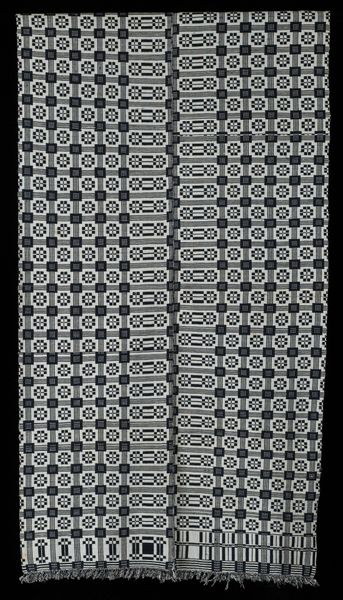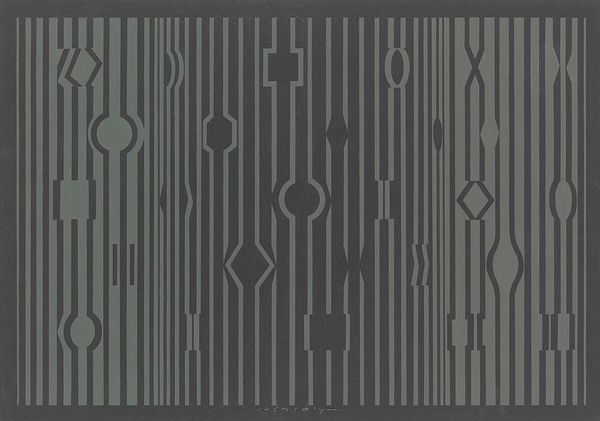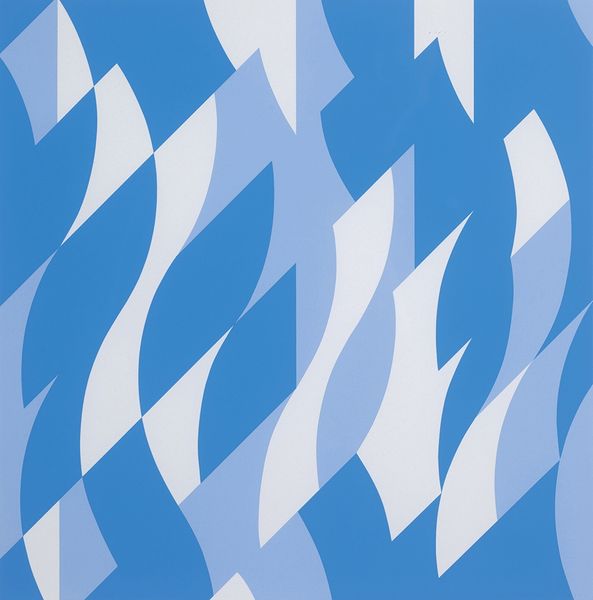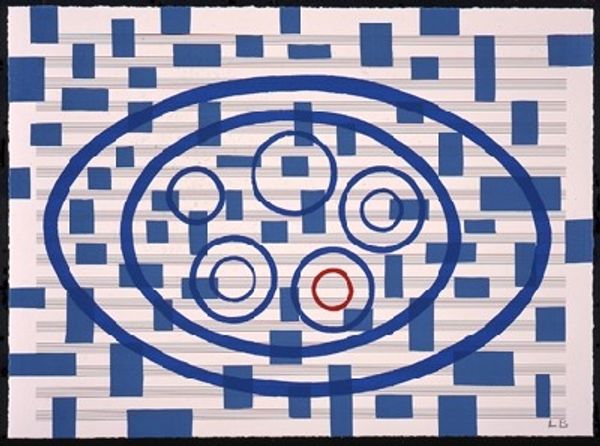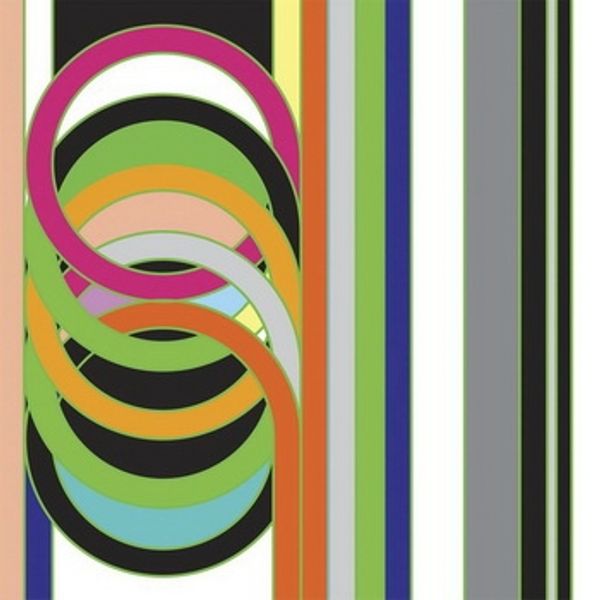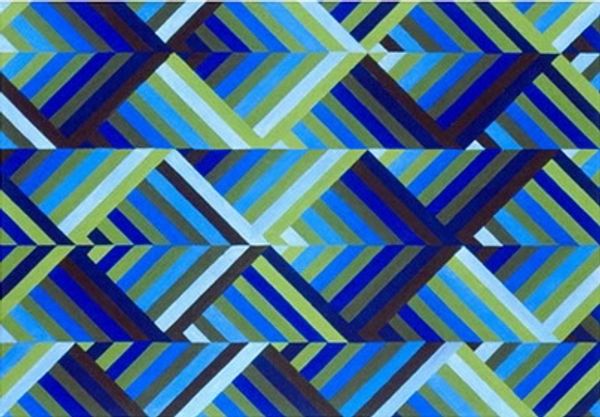
painting, acrylic-paint
#
op-art
#
painting
#
circle
#
pattern
#
acrylic-paint
#
geometric pattern
#
abstract pattern
#
organic pattern
#
geometric
#
geometric-abstraction
#
repetition of pattern
#
vertical pattern
#
abstraction
#
pattern repetition
#
layered pattern
#
funky pattern
#
combined pattern
#
modernism
#
repetitive pattern
Copyright: Antonio Asis,Fair Use
Curator: Here we have Antonio Asis' "Untitled (Interférences polychromes)," crafted in 1956 using acrylic paint. What's your initial reaction to this work? Editor: The high contrast is striking! It feels visually energetic, almost dizzying. I am curious about the repetitive circles and how the artist decided on the placement. Curator: Considering Asis' wider body of work, this piece stands as an interesting example of the burgeoning Op Art movement. His exploration of geometric abstraction pushes the boundaries of perception, prompting questions about how our eyes and minds interact. I mean what about social, economic and political situation happening in Argentina around the time of its production? Editor: I appreciate your mention of the historical period. What does seem to be important here, though, is thinking through Asis’s labor – applying such meticulously rendered acrylic on canvas, carefully forming these shapes to create optical interference and that dizzying sensation. Also to mention the use of synthetic acrylic paint rather than more conventional oil-based material to achieve precision and vibrancy. Curator: Absolutely. It reflects the socio-political and cultural climate of post-war Argentina. Abstraction in Latin America became a site of contested meanings: it represents an effort to find an artistic language outside of oppressive nationalist ideologies. It sought universality to forge identity beyond restrictive identities imposed by authoritarianism, opening new opportunities for cross-cultural dialogues and fostering a sense of collective identity across borders. Editor: I suppose. What the artist seems to do with geometry goes back to some historical construction practices. There seems to be something to it about Asis reclaiming the language of craft, the use of the hand. Even the work’s title: "(Interférences polychromes)". What kind of labor conditions or artistic training would Asis have undergone? Was this artwork commissioned, perhaps reflecting the preferences of specific patrons or institutions and their role in shaping Argentina’s cultural sphere at that time? Curator: That's an insightful take, focusing on materiality and artistic training! It helps us appreciate not just the aesthetic but also the tangible effort poured into its creation. The tension you see is one that certainly existed as part of a collective artistic response in Latin America’s artistic discourse to external hegemony. Editor: And understanding how that production informs the meaning is essential, as much as the context! It all underscores a fascinating dialogue between abstraction and socio-political narrative. Curator: Agreed. It’s in understanding all this labor that allows one to connect it with his unique style that blends Op Art and abstraction. Editor: I come away from this piece feeling much more cognizant of the conditions behind it all. It’s this close attention to making that enables new ways of approaching art history.
Comments
No comments
Be the first to comment and join the conversation on the ultimate creative platform.

